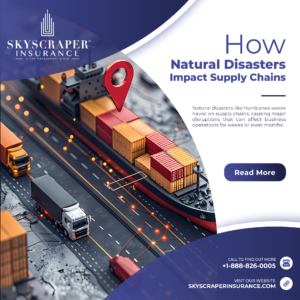Crawford & Co. leaders foresee significant insurtech development this year, largely driven by catastrophe costs.
Several executives at Crawford & Co., the global claims management and business services firm, recently gave some thought to how the insurance industry will evolve in 2024.
What emerged among their varied perspectives was a significant focus on technology applications in the insurance sector over the coming year. What follows is a collection of their predictions.
Demand will grow for in-person business interactions.

“2024 will present a tipping point, as we find ourselves increasingly working with people that we’ve never met in-person before, and subsequently recognize that our working relationships are no longer the same. We’ll reach the point when virtual connection is not enough, and it will become vitally important to actually meet people and form relationships face-to-face. At this point, business relationships that have been purely virtual are going to evolve to be much more in-person, simply because the desire to have that connection is going to increase…”
“We may not be back in offices full time, but the need and desire for a stronger in-person connection will be high. Fortunately, a hybrid work arrangement and personal connection are not mutually exclusive: people can meet for lunch or dinner even when working from home. Organizations can support this evolution by reiterating the need for relationships and encouraging the pursuit of connection beyond the screen. It’s just a matter of helping people see the need; that alone may be the single biggest catalyst people need from their employers.”
— President & CEO Rohit Verma
Insurtech acceleration will continue.

“With Insurtech now touching practically every part of the insurance ecosystem, the industry’s appetite for disruptive technology is expected to continue to accelerate in 2024. Twenty years ago, nothing happened this fast in insurance, but in today’s quickly moving market, the industry has come to realize that it can adapt, change and innovate at a much faster pace in order to integrate technology into what has historically been a traditional and conservative business model. To see the current high level of appetite for acceleration in the traditionally risk-adverse insurance industry is really encouraging for the future of the industry. In the end, what lies at the center of it all is really a move toward innovating to drive better experiences for the customer – and that’s ultimately good for all of us.”
— Digital Solutions CEO Kenneth Tolson
Climate-driven CAT losses will demand better tech solutions.

“As global warming, deforestation, and other kinds of human activities continue to impact the climate and present a multi-faceted threat to our ecosystem, AI can help mitigate some of these risks. Key areas where AI is poised to be a transformer include:
- Prediction and analytics: AI models can predict climate patterns or extreme events, providing better opportunities for preparation and response.
- Resource optimization: AI can help with optimizing the use of resources like water, energy, waste reduction and emissions to mitigate risks.
- Monitoring and detection: Near to real-time monitoring of environmental conditions and detection of these changes can be achieved much earlier.
- Policy enforcement: AI can also be used to support the enforcement of environmental policies, including monitoring compliance and reporting any kind of violations.”
— Crawford Network Solutions President Meredith Brogan
AI will drive the automation of claims processes, but…

“In 2024, AI’s role in automating claims processes will expand significantly, revolutionizing claims management and aiding in climate risk mitigation. Technologies such as IoT sensors in homes, part of Insurtech solutions, will play a key role in predicting and preventing losses, though adoption may present challenges. A subset of AI, Generative AI, will be crucial in processing large volumes of claims efficiently, accurately evaluating coverage against documentation and policy terms, and enhancing the effectiveness of desk adjusters in managing inspections, thereby accelerating claim resolutions and bringing better outcomes for policyholders and clients. Despite AI’s advancements, the “human in the loop” approach remains essential, providing the empathy, ethics, and context that AI cannot offer. This collaboration underscores the critical need for an ethical AI framework, highlighting the significance of a balanced and empathetic approach in the insurance industry for responsible AI utilization.”
— Vice President of Corporate Solutions Sam Krishnamurthy
Fraud expansion

“Economic downturns historically bring spikes in claims frequency, and the looming recession leads us to anticipate increased incidences of fraud in the claims space in 2024. This will require a strong collective effort from the industry to help detect fraud, while still balancing the need for excellent customer service and adhering to principles of good faith. Opportunities exist to leverage technology to address this challenge. At an industry-wide level, we are getting better at collecting and mining data to identify systemic fraud. On an individual claim level, to help minimize fraud, AI tools can help adjusters thoroughly investigate losses, making sure all policy conditions have been met and all facts are known before making a coverage decision. Successfully combatting fraud in 2024 means paying attention to the details. We must invest the time to investigate claims promptly and thoroughly, and provide excellent service to the policyholders presenting legitimate claims; at the same time, we must find ways to resist illegitimate claims.”
— President of Canadian Operations Greg Smith
CAT-driven automation adoption

“With current weather patterns and increased CAT activity showing no signs of abating, one critical success factor for claims automation in 2024 will be technology’s role in the triage process. From the initial point of engagement with a claim, the ability to triage according to the type of loss is of critical importance. Allowing the capture of real-time data from the policyholder to ensure the right resource — field adjuster, contractor, appraiser or inspector — is sent out to the loss will help to move claims forward as quickly as possible during a CAT scenario. Geo-assigning tools will allow for physical resources to mobilize in designated areas, ensuring ease of travel and streamlined service. Additionally, the use of mobile tools will enable adjusters to process all first site visit reports on the scene, ensuring they are fully equipped to service clients and complete reports on the same day.”
— Senior Vice President, Platforms Solutions & Contractor Connection Canada Cortney Young
Product-oriented software development for the win

“Companies in the insurance sector will continue to experience pressure due to gains in consistency, efficiency, quality, and scalability to codify their core business model in software. Companies will respond to this pressure in a few ways:
- Project-oriented Underinvestment: Organizations that codify their business model with poor design and execution will find software investment to be expensive and an evolution inhibitor.
- Integration Investment: Companies that integrate other companies’ solutions for core business will see leakage of core business expertise and stifled evolution of core business differentiation.
- Product-oriented Business Reinvention: Smart organizations will embrace the cost and disruption of top-to-bottom reinvention to become a product-oriented software company and compete as SaaS in their given core domain.
While often slower than the integration path, companies that successfully achieve this kind of transformation will ultimately overcome competitors that either underinvest or solely invest in integration.”
— Broadspire Chief Technology and Data Science Officer Joel Raedeke
Opinions expressed here are the speaker’s own.




